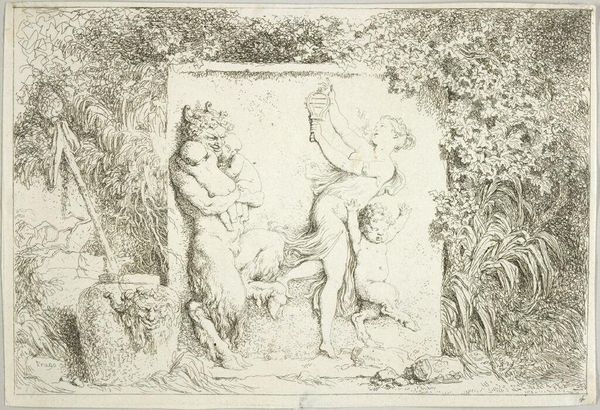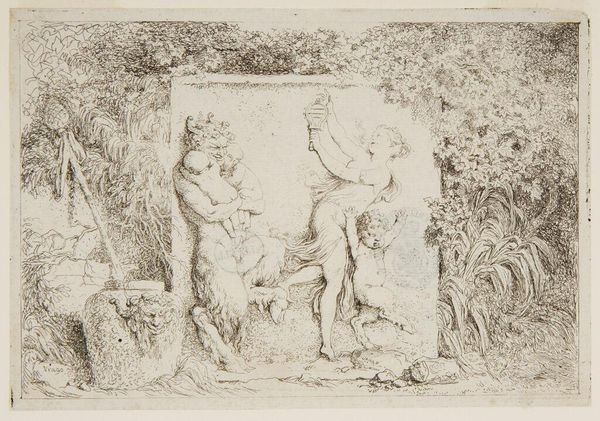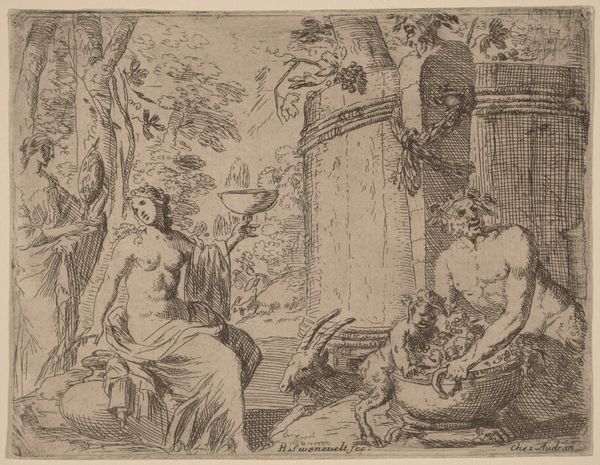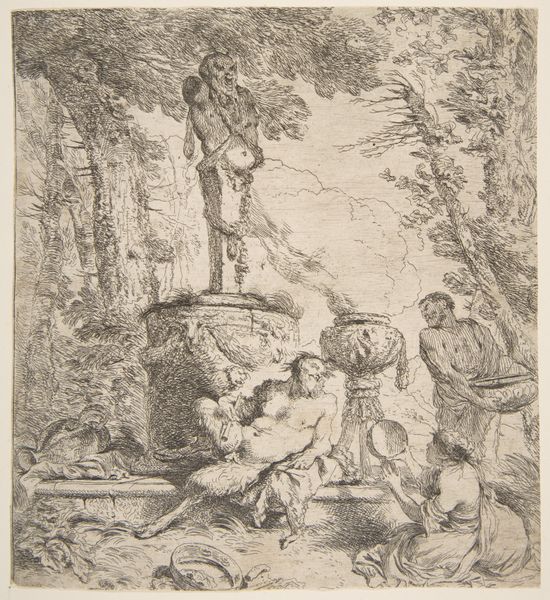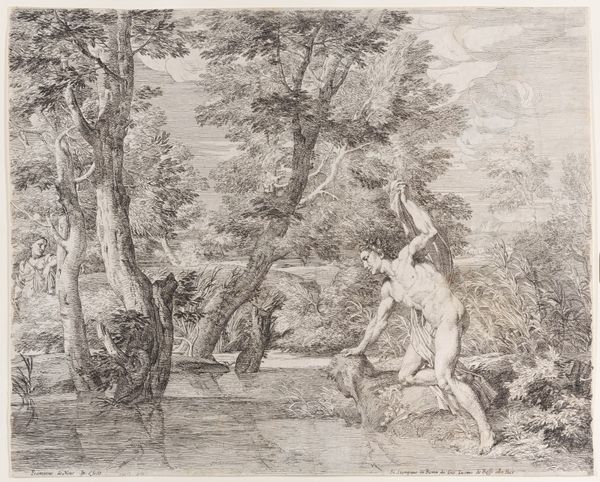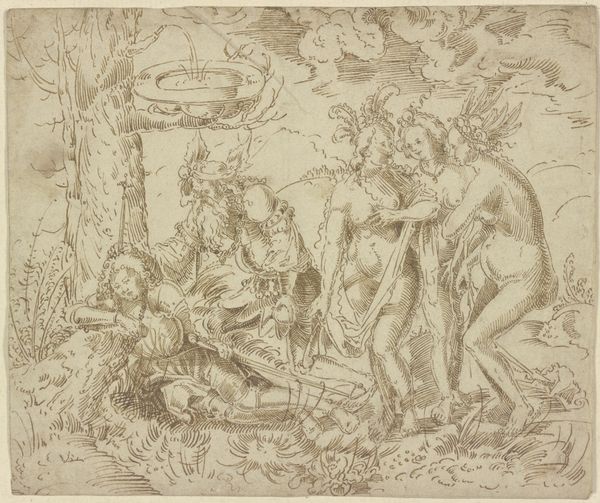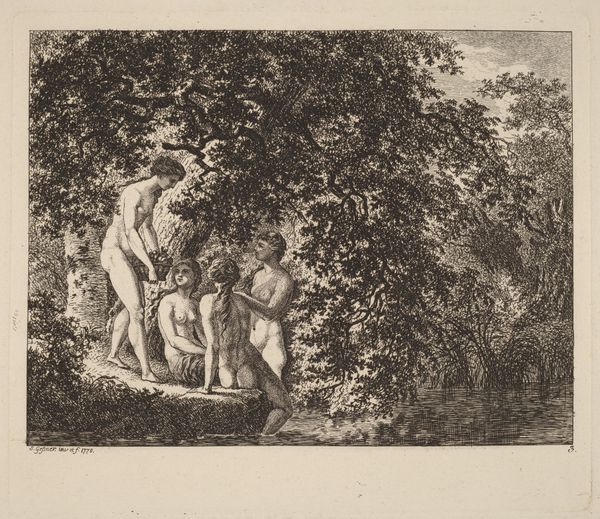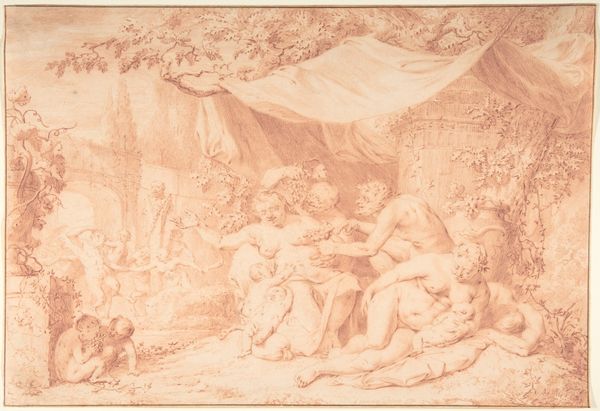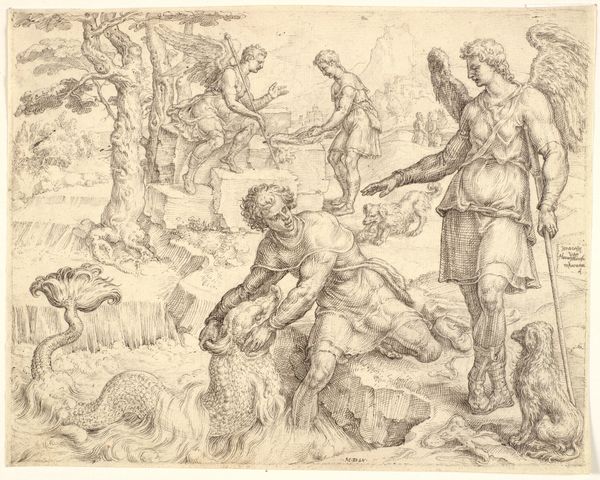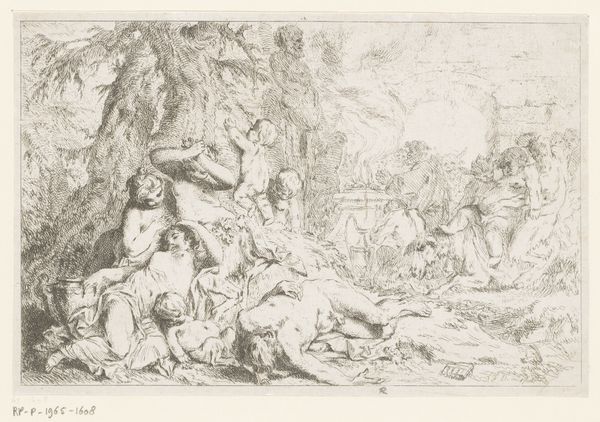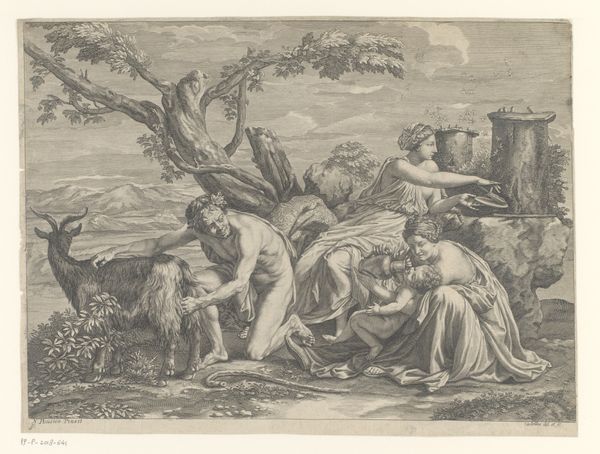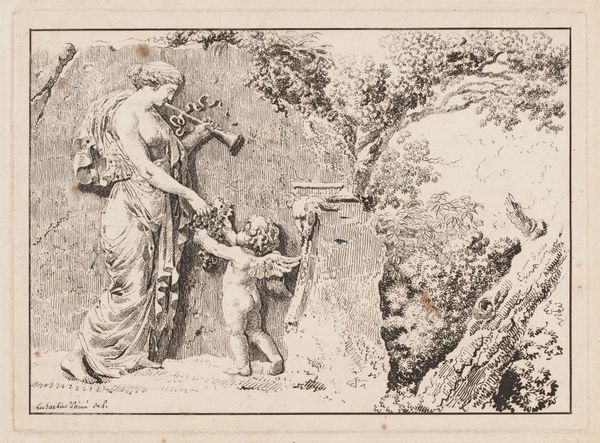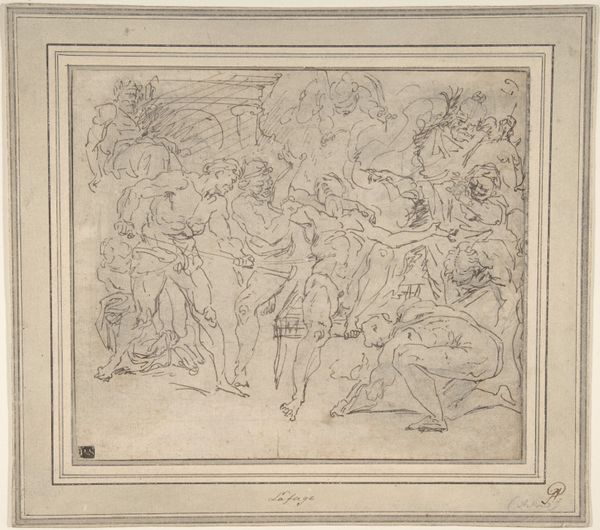
A bas-relief depicting a satyr at left holding two infants, another child satyr to right, dancing to the sound of the sistrum played by the woman in center, around the relief, a vase decorated with the head of a satyr, plants, and a thyrsus, from 'Four Bacchanalia' (Quatre Bacchanales) 1763
0:00
0:00
Dimensions: Sheet: 5 7/8 × 8 7/16 in. (14.9 × 21.5 cm)
Copyright: Public Domain
Curator: This is Jean-Honoré Fragonard’s etching, "A bas-relief depicting a satyr at left holding two infants, another child satyr to right, dancing to the sound of the sistrum played by the woman in center, around the relief, a vase decorated with the head of a satyr, plants, and a thyrsus, from 'Four Bacchanalia'," created in 1763. It's currently held in the collection of the Metropolitan Museum of Art. Editor: It strikes me immediately as buoyant, but with a darker, almost unsettling undercurrent. The fine lines and shading create a sense of movement and energy, yet there's a strangeness in the figures themselves. Curator: Fragonard uses the etching technique to create an interesting interplay of light and shadow. Notice how he articulates depth and volume, giving the bas-relief a sculpted appearance even on a two-dimensional plane. Editor: Absolutely, but it's the content that really grabs me. The satyr, cradling those babies...it’s a provocative reimagining of classical tropes. It pulls on historical depictions of sexual assault while reframing gendered and racialized tropes surrounding fertility, infancy and female figures. What might seem playful on the surface becomes a critique of power, pleasure and the mythologizing of male desire. Curator: You’re drawing out interesting ideas, but let's also appreciate Fragonard's technical mastery. Look at the way he captures the texture of the vase, contrasting the smooth surfaces of the figures with the roughness of the foliage. It highlights the artist’s understanding of form and material. Editor: Of course, technique serves content. The Rococo style, often dismissed as frivolous, is used here to stage a powerful, subtly subversive scene. How are we complicit, and what power do we, the viewers, have? Curator: I see your point about the darker interpretations, but one cannot deny the dynamism in his depiction. It has such vigor. Editor: Agreed. Even while pushing uncomfortable conversations. Ultimately, Fragonard’s image embodies a potent blend of artistic skill and social commentary, questioning established narratives of morality and desire, as well as those of classical training. Curator: Well, there's certainly more to this piece than meets the casual eye. The technique itself draws the eye deeper into those contextual considerations, I have to admit. Editor: And hopefully initiates conversations.
Comments
No comments
Be the first to comment and join the conversation on the ultimate creative platform.
